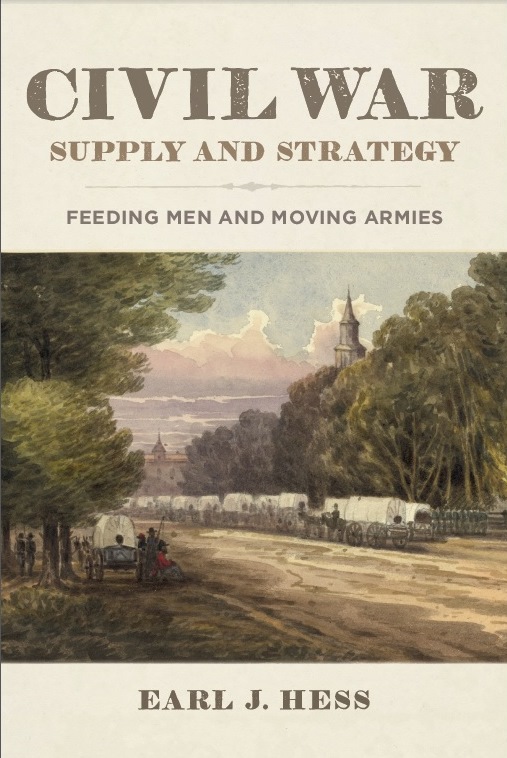Civil War Supply and Strategy: Feeding Men and Moving Armies
- Winner of the Army Historical Foundation Distinguished Writing Award (Institutional/Functional History), 2020
To order, go to: https://lsupress.org/books/detail/civil-war-supply-and-strategy/

"Civil War Supply and Strategy is a triumph. It insightfully connects strategy, supply, and the movement of armies, demonstrating U.S. ability and learning proved at least equal to what the Prussians showed in 1866 and 1870. Hess, our most capable thematic Civil War military historian, ties themes to narrative more effectively than ever before. He clearly explores the strategic impact of the different supply and transportation capacities of the Upper and Lower South, and displays his exceptional gift for research and offers a deep sense of context in terms of both nineteenth-century America and nineteenth-century warfare." -- Samuel J. Watson, author of Peacekeepers and Conquerors: The Army Officer Corps on the American Frontier, 1821-1846
"Earl J. Hess has long been hailed as this generationís most prolific and innovative historian of the sectional conflictís military course. In this scrupulously researched and discriminating volume, he expands upon themes explored in his earlier work on Civil War logistical systems, turning his trained eye upon the critical role that institutional supply networks and local resources played in determining the strategic choices of military leadership from the Trans-Mississippi to the Chesapeake. The result is a highly original work of scholarship that will challenge many readersí basic assumptions of the circumstances that led to Union victory and Confederate defeat. Its contribution to Civil War strategic and operational studies is vast.'' -- Christopher S. Stowe, professor of military history, Marine Corps University
There was a decisive link between supply and strategy in the Civil War. Feeding men and moving armies became the foundation of success, especially for armies on the strategic offensive. Based on extensive research in primary sources, this book examines how generals and their subordinates organized military resources to maintain a high level of army mobility during the Civil War. It takes a chronological approach to the topic, looking at the major campaigns in each of the three theaters of operations. More attention is devoted to the West, the region between the Appalachian Highlands and the Mississippi River, because that is where the problems of moving large armies were most formidable.
But Union logistical power was not unlimited and these limitations also influenced Federal strategy. Union commanders could comfortably operate in the Upper South but the Deep South presented unusual problems. The Mississippi River allowed them to penetrate the Deep South along a narrow corridor of control, capturing all key cities along its banks, and railroads barely allowed William T. Sherman to advance as far as Atlanta. But for the rest of the Deep South, the Federals relied on massive strategic raids to destroy resources and bring Union military power into the heart of the Confederacy.
Although this study covers the entire war and all means of logistics and supply in the field, it pays more attention to Union than Confederate operations because the Federals were on the strategic offensive and there is far more information available on how Union logistics and supply worked. This book also devotes more attention to railroad management than to river steamboats because it was much more difficult for army commanders to manage railroads than river transport. Finally, this book argues that the war in the Upper South was very different than the operations taking place in the Deep South. Federal army mobility was far more difficult in the Lower South states.
Based on extensive research in primary sources, this volume follows the authorís previous Civil War Logistics: A Study in Military Transportation by focusing on in-theater or tactical issues of logistics and supply rather than the national or strategic supply systems undergirding both the Union and Confederate war efforts. It not only describes the lines of communication crafted by various field commands but charts the level of success Federal armies managed to attain when they sought to live off the Southern countryside.
Published by:
Louisiana State University Press
Johnston Hall, Room 338
Baton Rouge, LA 70803
1-800-848-6224